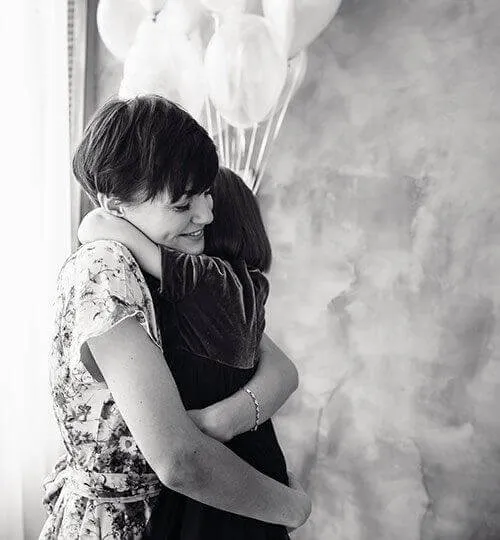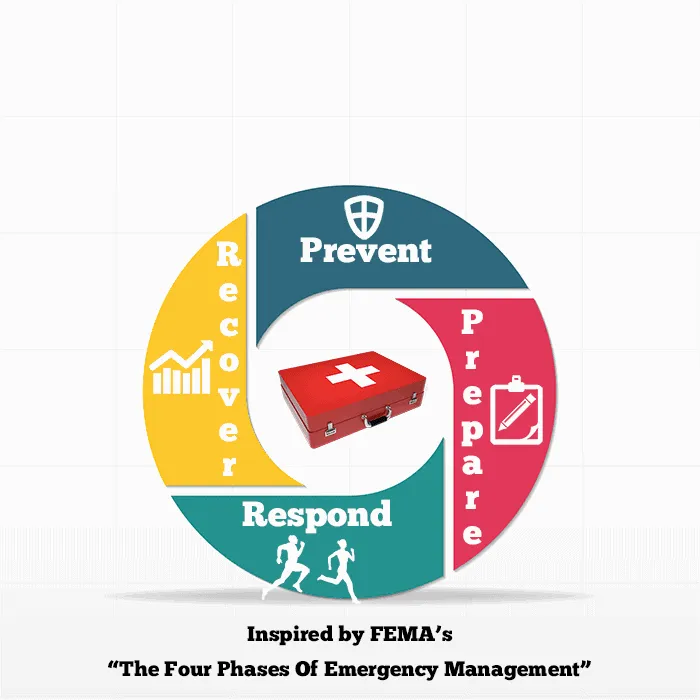Resilience is all about being able to overcome the unexpected. Sustainability is about survival. The goal of resilience is to thrive.
Jamais Cascio
Each small victory that you enjoy, be it at work, in your personal life, or in survival situation requires hardiness and, more often than not, sustained effort.
Table Of Contents
What is Resilience?
Resilience is a response to adversity. For that reason, sometimes it is best experienced in HD while chomping on a buttery bag of popcorn. But, chances are, that you are resilient on a daily basis, sometimes without even knowing it:
- when you adjust to difficulties of life, accept their presence and deal with them with a strong heart and a winning approach
- when you start rebuilding what was broken
- when you regain your happiness after a relationship breakup or a financial problem
- when you survive and heal after a major setback
- when you keep on going, no matter what
Resilience is not the absence of emotions. It is not an unfeeling or uncaring attitude towards pain. It is to cry, to shout, to grieve but not forever. It is to take the time you need to accept the unthinkable but then to stand up and live again, ready to go for one more round in the messy and beautiful carousel we call life.
The good news is that you ARE resilient. Resilience is not solely a superhero trait; it is present in all of us. You are the hero of your own life, every single, 60-second minute. From scrambling to put the together the payment for the roof over your head to staying up just ten more minutes to fold your child’s clothes when you can barely keep your eyes open, you are irrepressible, dependable and wonderful.
How Resilience Works
Every single one of us is a walking example of how resiliency works.
History is full of examples of courageous people who overcame difficult odds. People such as Joan D’Arc, Hellen Keller and Stephen Hawking are just a few of the ones that used resilience and persistence to overcome overwhelming odds.
Researches and psychoanalysts have long searched for an answer to this question. The results show that some people cope with ongoing crisis and stressful situations in many different ways:
- humor, including black humor.
- social skills – getting support and empathy from others
- cultivating a strong personality – often you get what you focus on
- goal setting – this is most powerful resilience ingredient.
 The way that resilience works is simple but powerful. You need to find something to go on for. That something might be faith, your beliefs, a powerful goal, the support and companionship of others, or just your decision not to go down without a fight.
The way that resilience works is simple but powerful. You need to find something to go on for. That something might be faith, your beliefs, a powerful goal, the support and companionship of others, or just your decision not to go down without a fight.
When Do You Need To Be Resilient?
There are many, many examples of moments when you have to be resilient. Here are just a few of them:
- In business and at work
- When fighting disease
- When you are dealing with loss of any kind
- When you are fighting depression
- After encountering a setback. The difference between a setback and failure is in how you perceive them. Failure is definitive while a setback is just another bump in the road that needs a few more tries for you to go over it.
- When dealing with addiction
- When you are being bullied
- When rebuilding after a natural disaster
You need to be resilient when life hits you hard. Take a deep breath, gather your strength and hit back.
Why is Resilience Important?
- Resilience is important because setbacks, sickness, breakups, and disasters are all part of life. But so are small victories, being nursed back to health, finding love again and being part of something greater than yourself.
- Resilience is important because resilience is plan B and C and, sometimes, plan D.
- Resilience is important because happiness is a choice and it comes when you keep on going, in spite of obstacles that you might encounter.
- Resilience is important because every single successful person has a story about it.
- Resilience is important because, to hold a bigger glass, you have to let go a smaller one.
When is Resilience Bad?
The key to being resilient long term is to try hard, take a break and then try again. The break is essential.
Sometimes in an attempt to be stronger day after day after day, you try to be superhuman. You might even succeed, for a while. But there is a limit to the amount of punishment you can take. Resilience is bad when:
- you do not give yourself time away from the very thing that you’re fighting
- you do not give yourself the opportunity to heal, so you can live to fight another fight.
Sometimes you need to give yourself time to be weak in order to become stronger.
Resilience Traits
Being resilient takes a toll on you. It wears you down, both physically and psychologically. Besides taking a break (see the previous point), these are the traits that make you physically and mentally sturdier:
Emotional Traits
Emotional resilience is to overcome something that hits your heart and your mind – a failure, a stressful event or emotional trauma and you build it up by acquiring these traits:

- Situational awareness – Acceptance of reality is the first step towards resilience.
- Self-awareness – One part of being realistic is to accept one’s limitations. Resilience means knowing what you can do and you can’t and focusing on the former alone.
- Socially active – Once you accept your limitations, you will realize that you need support from others to overcome them. Surround yourself with supportive friends and family.
- Patience – If every setback could be overcome fast and every trauma dealt with overnight, there would be no need for resilience. Such things usually take some time to deal with, and they come with ups and downs.
- Expressiveness – Expressing your pain helps in the process of healing. You may not necessarily be very talkative, but there are other ways of expressing yourself – through painting, writing a short story or poem, singing a song, dancing or anything expressive.
Physical Resilience
It is your body’s ability to endure and to heal. It is closely linked to your stamina and strength, but also to your mindset. This is how you can become more physically resilient:
- Genes – you can’t control them, so you will have to work with what you have. Knowing if your genetic makeup gifted you with strength or weaknesses will help you focus where it matters.
- Self-awareness – Just as emotional resilience comes with knowing one’s psychological limitation, physical resilience comes with knowing one’s strengths and weaknesses. Your body can talk to you through symptoms and pain. Trust your body and don’t ignore its calls. Take care of those needs on time.
- Healthy lifestyle – hygiene, exercise, sleep and an adequate diet will help you develop an excellent physical shape that will serve you well in times of need.
- Training – since resilience is a long term reaction to adverse conditions, you should focus more on physical endurance and stamina than anything else. Sure, there might be times when you need short bursts of strength, but nothing can beat endurance in the long run.
How to Start Building Resiliency
What I would like to see more when reading how to articles is actionable advice. Sometimes it is hard to put that together, using words and examples that most people can relate to, especially when it comes to more abstract topics. I’ll do my best to give you some examples of how you can become more resilient.
Resilience as a Muscle
Just like a muscle, sturdiness can be built up. Do remember that, just like with bodybuilding, the rest periods are as important as the actual lifting. You need to give the muscle time to heal and to grow.
Because resilience means to keep on going, despite the obstacles you might encounter on the way, it helps you know crystal clear where you are going:
- set some goals. Detailed, actionable goals that define clearly what you want to accomplish. “I want to get back to a healthy weight” is not clear enough. “I will keep a healthy, slow carb diet for the next 60 days with one cheat day every week with the goal of losing 40 pounds for the whole period” is a little bit more defined.
- train your mind to see bumps in the road as just setbacks, not a complete failure.
- be persistent – keep on going, no matter what. Visualize accomplishing your goals to get additional motivation.
Resilience as a Rubber Band
Like I was saying earlier, resilience is plan A, B, C and sometimes D. Life will stretch you in unexpected ways, but if you have a well-defined target of what you want to accomplish, you will find another way that leads to your desired results:
- be flexible, adapt to any changes in your initial plan or setbacks you might encounter while applying it
- be elastic, chase your goal, not the path you planned on taking to get there
Resilience for Different Life Roles
Resilience for Parents
There are a few reasons why parental resilience is so important:

- the more you try to help your child, the more likely you are to succeed
- it teaches your child the power of being persistent and not giving up
- it is very likely that your child will copy your resilient behavior and use it during her adult life
- Your positive behavior will have both a short term and a long term impact on your child’s well-being and, more or less, determine the quality of her life.
Resilience for Leaders
During the few years since I’ve become self-employed, I have found that success in business usually has little to do with luck. Despite my wishful thinking, obstacles in business or a leadership role are not something that you get to burn thru and eliminate once and for all. Rather than the complete absence of obstacles, I now view success as the ability to deal with setbacks better and faster than I was able to when I first began. And, if you are lucky, you might get additional resources (or knowledge) to help you deal with those issues.
See also how to deal with a master manipulator at work.
Resilience for Patients
Strength or character and resilience is something that I’d rather put to use in the business field than in any other setting.
If you are dealing with health issues, your resilience is probably one the few things that you have control over. It has taken me years to get rid of some of my health issues. Other issues still bother me, but not as much as they used to, I manage to ignore them most of the time. It has also taken me years to fight off depression and anxiety over some things that I had no control over. When it comes to others dealing with health issues…what do I know? But I can tell you for a fact that I am happy because I decided to be resilient, almost a decade ago.
Resilience for Employees
Resilience is not needed just by the leaders. As an employee, you are going to need to have patience and perseverance on your side. You do that by setting goals of where you want to be, professionally in the next few years.
Keep in mind that there are workplaces that promote growth and workplaces that are toxic. Figure out which one is your place of work. Sometimes, playing safe is risky in itself and staying too long with a job that doesn’t fit you will affect your earnings. Always make sure that you have money to pay the bills and put food on your table. There are a lot of part time income opportunities out there that will help you get by at least for a while.
Community Resilience
Some problems are individual, some affect a family, while others influence a much larger community. All of these issues can be addressed at a community level, and the community itself functions only as well as the majority of its individuals.
Communities can be resilient by developing a series of plans, such as an economic development plan or a disaster plan which encompasses all four stages of emergency preparedness.
Resilience Theory
Resiliency theory links certain risk and protective factors that determine whether a person will be resilient or not. The risk factors include negativity in the form of stigma, isolation, restrictions, or unrealistic attitude. In contrast, positive factors like acceptance, resoluteness, a sense of control, hopefulness, self-efficacy, social support, and resourcefulness protect human’s natural resiliency and keep it stronger.
A regular person faces a mix of both risk and protective factors, but the resiliency depends on the relative strength of each against the others. If protective factors are more powerful, they will easily win over the risk factors.
Shame Resilience Theory
This is another theory about resilience that is specifically focused on how to be resilient against the feeling of shame. Dr. Brown, introduced the shame resilience theory in her book citing four step toward resilience:

- Accepting and recognizing the presence of shame through triggers like increased heartbeat, blushing or certain fears
- Developing critical self-awareness through practice and mindfulness
- Sharing the story that makes you ashamed with people who can be a source of support
- Listening and supporting the stories that others share with you
Dr. Brown cautioned against trying to overcome shame through ignoring it, hiding it or self-pity. Also, she found in her research that empathy works as a shield against shame and through sharing your story and listening to others you build an empathy network that will help you deal with shame. Empathy makes you more resilient and makes you mindful of other people that deal with similar problems. That in itself normalizes your experience by showing you that, well, to err is human and you are not the only one.
Resilience vs. Perseverance
There is another trait that serves you well in dealing with challenging situations. It is the ability to stand firm against all setbacks, usually termed as perseverance. While there are a lot of similarities between resilience and perseverance, their timing is what sets them apart. Perseverance is the mental strength that you use while you are on the path to accomplishing your goals and that fuels your progress. Resilience is reaching for the same goals, maybe using a different path after a major setback and in spite of it.
Environmental Resilience
Our ever-expanding civilization has shaped the environment in a myriad of ways. Agriculture, industry, colonization, animal husbandry and many other modern human activities have affected the environment in many, many ways. This is what most people agree on.
However, environmental resilience is the subject of many heated debates. The disagreement is usually about what the amount of punishment that our planet can take. It is usually represented as the fine balance between business profit (which is, in some cases, reduced by environmental regulations) and keeping our environment healthy and bountiful.
The great majority of the scientific community warn against pushing the limits of the environmental resiliency too far.

You need to decide for yourself which side you are on, but, surely, there must be better ways to increase profit without risking the very environment we live in.
Resilience Examples
There are stories of resilience all around us. Some are fictional but based on observation of real events and still hold inspirational value. Some are real and happen regularly around us.
Army Resilience Training
One practical example of how resilience can be developed is army training. Armed personnel is trained and prepared to deal with the difficult situations they might encounter even during routine operations.
The Army defines Resilience as “the mental, physical, emotional, and behavioral ability to face and cope with adversity, adapt to change, recover, learn and grow from setbacks.”
We have the most skilled, ethical, and combat hardened Army in our Nation’s history. No matter where we are around the world, America’s Soldiers are displaying courage, commitment and character. We are demonstrating unparalleled competence and agility. And no matter the challenge, no matter how complex the environment, or how dangerous the situation, our Soldiers fight and win.
General Mark A. Milley – 39th Chief of Staff of the US Army
Books about Resilience
- Room by Emma Donoghue
Sponsored
The book is about a 5-year-old child and his Ma, who are abducted by Old Nick in a small room – a garden shed. The story tells how the kid helped her mom escaped and how they together tried to live a normal life after spending so many years inside a small room, untouched with the real world. Although the story is not real, it has resemblance with many real-life examples of people who had an abnormal childhood but who lived like a normal person. - The Unthinkable by Amanda Ripley
Sponsored
An investigative journalist by profession, Ripley decided to look beyond the usual tale of disaster. In the book, she covers human response to some of the biggest disasters of human history and tries understanding it through neurology, psychology and military studies. - The Resilient Enterprise by Yossi Sheffi
Sponsored
While most books deals with emotional resilience, this one book tells stories of financial resilience. The author speaks about the real-life success stories of Intel, Amazon, Nokia and similar big names to explain how resilience is not just about the choices one takes after a disaster hit. The book also examines the decisions made by enterprises before the event. Their preparedness determines whether they will succeed or fail.
Real Stories about Resilience
Some of the stories live a short life as a news article. But they remain equally inspiring for us. Here’s some of those:
- Nick Ventura was 13 when the accident happened. His snowboard got tripped up, he fell backward, colliding with a tree. He woke up in a hospital months later to find he got a serious head injury and wasn’t able to snowboard. Not just his snowboarding was affected, he was unable to walk, to speak, to recall simple things like friends name. But he survived and lived through the difficult times. His resilience got linked with one mission, one goal – to educate children how important it is to wear a helmet – it was the helmet that saved his life. Now, 17, he can snowboard again and has founded an educational campaign that promotes wearing helmets.
- Muhammad didn’t get a chance to learn about resilience, goals or most other things. He was just two weeks old when a bomb hit his house in Aleppo, Syria. While rescuers were able to evacuate everyone else safely, he remained buried under concrete rubble. He was using his only resource – crying loudly. And he succeeded. Rescuers found him because of his crying and dug him out safely. He is a healthy child now. His story is a good example of how humans are born with resilience.
These and many other stories of resilience are important. They are important because they give us hope and teach us how to live our lives after a painful event. They are important because they give us self-confidence and show us the extraordinary strength we are born with. They are important because they teach us the approach, the strategy, and, more important, the way of thinking that will keep you afloat and help you start the life after.
I would love hearing your story of resilience. So would many, many others that may be inspired by it, no matter how small or mundane you might think it to be.





















